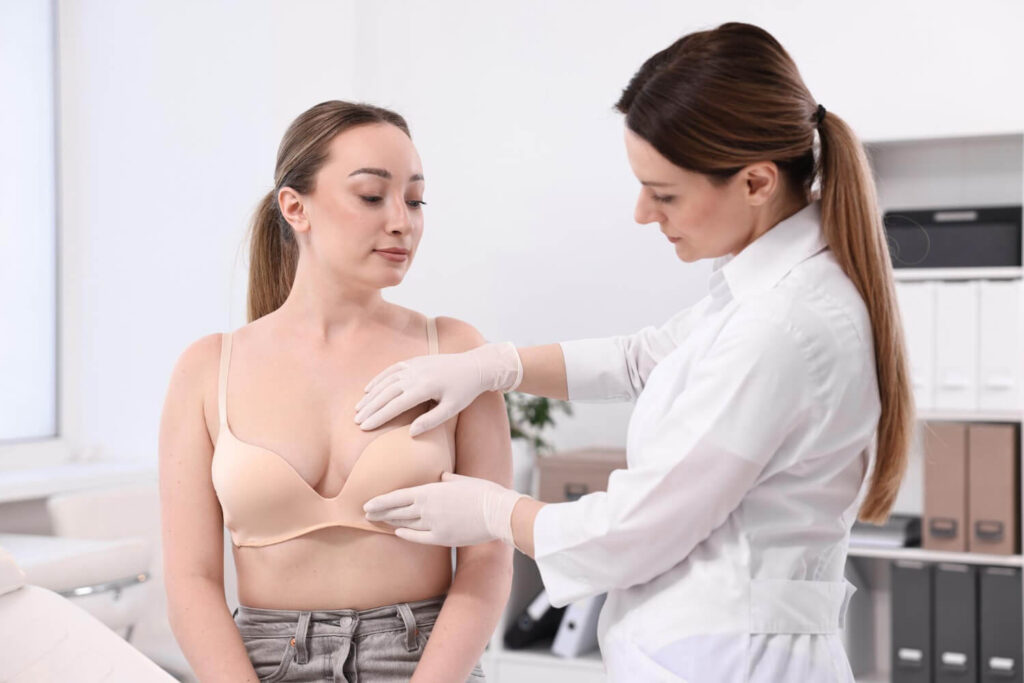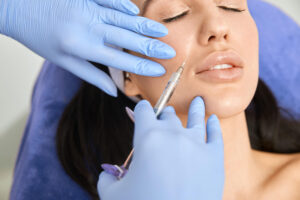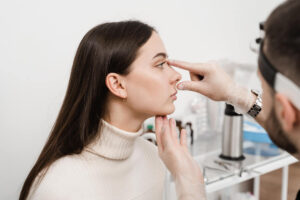Thinking about getting breast implants often brings excitement. But right after the excitement, one question keeps coming up: how long does recovery last? That question usually shapes when to schedule surgery, how much time to take off work, and whether someone will be around to help at home.
Many patients walk into Illusions Plastic Surgery here in West Palm Beach with that exact concern. And the answer tends to vary. Each body responds differently, each lifestyle affects recovery in its own way, and the type of implant plays a role in what happens next.
The term breast augmentation recovery shows up in a lot of online searches. People want to know how long they’ll be out of their usual routine, when they can start working out again, and what they should avoid. This guide breaks it all down into phases, with clear and simple details.
Getting familiar with each stage of breast augmentation recovery can help anyone considering the procedure plan ahead. Knowing what to expect each week helps lower stress and prevents rushed decisions. Even for those already booked, this kind of info tends to offer more peace of mind.
The next sections go over what typically happens right after surgery, how the body feels during the first few weeks, and what long-term recovery might look like. The goal here stays clear: keep it real, helpful, and easy to follow.
What to expect right after surgery?
The hours right after breast augmentation surgery usually bring a mix of relief and questions. The procedure ends, but the healing journey starts—and the first few days often feel like a lot. Knowing what to expect helps set the right mindset and avoid unnecessary stress.
The first 24 to 72 hours
The body tends to feel sore, swollen, and tight. Pain medication from the surgeon usually helps manage the discomfort, but some stiffness around the chest and arms might stick around for a bit.
Most women stay groggy from anesthesia during the first day and need someone close to help with simple things—like standing up, going to the bathroom, or getting dressed.
A surgical bra stays on to protect the implants and support the new shape. Drainage from the incisions may happen in small amounts. That tends to be normal and stops after the first few days. Sleep often feels awkward, especially with restrictions on sleeping flat or on the side.
How does the body respond to implants?
The chest muscles and tissues usually take time to adjust to the implants. Swelling tends to make the breasts look high, firm, and not fully “settled.” That stage doesn’t last, but it can feel strange at first. Skin may feel numb or hypersensitive around the incisions, which tends to fade in the following weeks.
Bruising can show up and look worse before it fades. That doesn’t always mean something went wrong—it’s part of how the body processes trauma from surgery. Surgeons in Illusions Plastic Surgery often check in within the first few days to monitor progress.
Can daily tasks get done during this time?
Simple movements like reaching up, lifting light items, or pulling open a door may feel harder than expected. Tasks that involve raising the arms or putting pressure on the chest often get avoided for now. Even getting dressed or brushing hair might need patience—or help.
Driving usually stays off the table until the surgeon gives the okay, especially while taking prescription pain meds. Most women rely on a partner, friend, or family member to get through these first few days of breast augmentation recovery without pushing their limits.
Setting up a quiet space, having post-op supplies nearby, and sticking to the surgeon’s care plan usually keeps this stage smoother. And while the first 72 hours don’t feel like the finish line, they often set the tone for a safer and more manageable recovery ahead.
When to call the surgeon?
Sharp pain that doesn’t go away, fever, redness around the incision, or unusual discharge might point to infection or other complications.
Most clinics—including Illusions Plastic Surgery in West Palm Beach—give patients a direct line to report these issues without delay.
Follow-up appointments usually happen during this first week. That visit helps the surgeon check for proper healing, adjust post-op care if needed, and answer any new questions. Showing up to that appointment—even when feeling tired—keeps recovery on track.
Week two to four: returning to normal
Between the second and fourth week of breast augmentation recovery, most women notice big changes. Pain tends to fade, energy starts coming back, and the routine slowly feels more familiar. But even with progress, this phase still brings limits—and knowing what to expect keeps healing on track without setbacks.
How soon do most women go back to work?
By week two, many women return to desk jobs or remote work, as long as the role doesn’t involve heavy lifting or fast-paced movement. Sitting upright for long hours may still cause some discomfort, especially without breaks or proper posture. Some patients take short walks or light stretches during the day to avoid stiffness.
Jobs that involve lifting, standing all day, or helping others physically (like in nursing, childcare, or fitness) usually need more time off. Most surgeons recommend at least three to four weeks before going back to that kind of role. Each case feels different, and personal recovery speed shapes the timeline.
Light activities vs. full workouts
Walking tends to feel easier in week two. By week three, some women start light cardio, like slow treadmill walks or easy cycling. Strength training, pushups, or chest exercises stay off-limits during this stage of breast augmentation recovery. Those movements can stress healing muscles and shift the implant position.
Stretching arms overhead still feels limited for some, depending on implant placement and body type. Following the surgeon’s post-op plan closely tends to help avoid issues like swelling, pain flare-ups, or delayed healing.
Sleeping positions and posture tips
Back sleeping usually continues through weeks two to four. That position takes pressure off the chest and keeps implants from shifting. Using extra pillows to support the back, arms, or neck can make nights more comfortable. Side sleeping often stays off-limits until the surgeon clears it—usually after the one-month mark.
Posture during the day starts to matter more. Sitting slouched or leaning forward puts pressure on healing areas and may increase tension around the shoulders or neck. Standing tall, keeping the chest open, and taking breaks from screens help with circulation and muscle balance.
Long-term breast augmentation recovery milestones
After the first month, breast augmentation recovery tends to feel less intense—but the process hasn’t fully ended. Some changes happen slowly, and the body continues to adjust in ways that don’t always show right away. This stage involves patience, observation, and clear communication with the surgeon.
How does the body feel at the six-week mark?
By six weeks, many women stop wearing surgical bras and switch to regular soft bras without underwire. Swelling tends to decrease a lot by this point, and the breasts may look more natural in shape and position. Full range of motion usually comes back, though some stiffness might still linger after sleep or long hours at a desk.
But every body heals on a different timeline. Some women still notice sensitivity, firmness, or tingling sensations in one or both breasts, especially around the scars.
Read more:
👉 How long do breast implants last?
Scars, sensation, and shape changes
Scars often look pink or raised in the early months. Over time, they tend to flatten and fade—but that process may take six months to a year. Sun protection helps avoid darkening the area, and some women use scar creams with their surgeon’s approval.
Changes in sensation—like numbness or extra sensitivity—can continue during long-term breast augmentation recovery. That usually depends on implant placement, nerve response, and how the body handles healing. In most cases, these symptoms fade gradually, but sometimes they stick around in small areas.
The shape of the breasts also continues to evolve. Settling may take months, especially with implants placed under the muscle. What looks uneven or too firm early on often improves with time.
Final results: when do they show?
Final results tend to appear between three and six months after surgery. By then, most swelling disappears, implants settle fully, and the chest feels more natural. At one year, the body usually reaches its new normal—both in appearance and in how the breasts feel day to day.
Women often schedule a one-year follow-up at clinics like Illusions Plastic Surgery in West Palm Beach to check implant positioning, healing progress, and scar condition. That visit can also bring up long-term care plans, like future imaging, routine checks, or discussions about implant replacement later in life.
Long-term breast augmentation recovery brings more freedom and confidence—but staying aware of small changes still matters. Being in tune with the body, keeping follow-ups on the calendar, and asking questions when something feels off tend to make a real difference in the years that follow.







